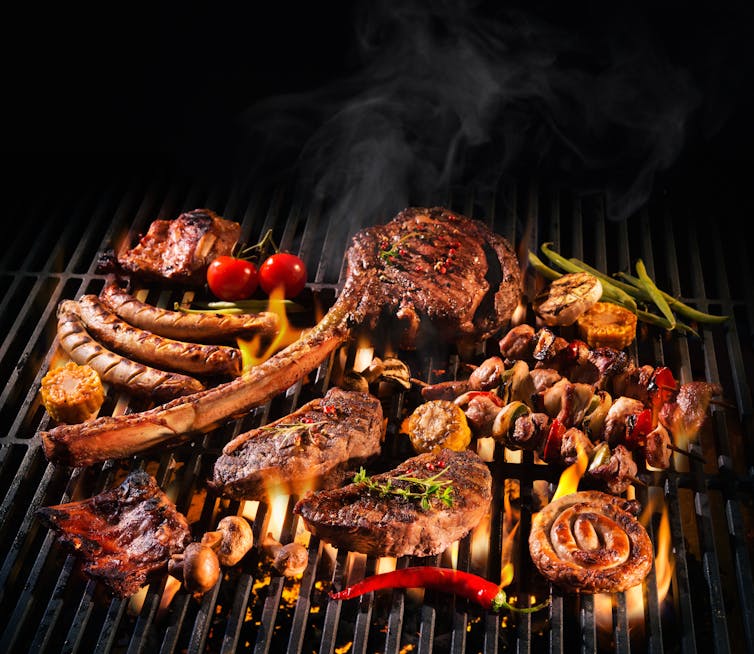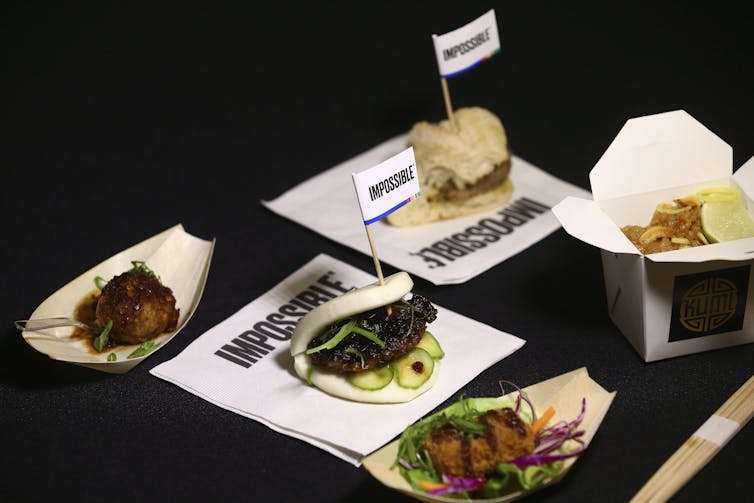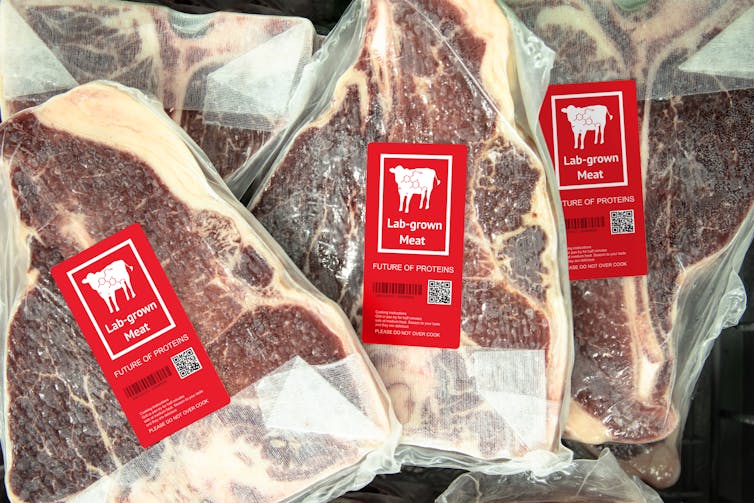In 2019, Burger King Sweden launched a plant-based burger, the Insurgent Whopper, and the response was underwhelming. So, the corporate challenged its clients to style the distinction.
Burger King Sweden created menu merchandise the place clients would have a 50-50 likelihood of getting a meat burger or a plant-based one. To seek out out, they needed to scan the burger field in Burger King’s app. The outcomes: 44 per cent guessed flawed — clients couldn’t inform the distinction.
Plant-based meats are merchandise designed to mimic meat. Whereas earlier merchandise like tofu and seitan have been meant to exchange meat, newer merchandise try to imitate its style, texture, scent and look. Plant-based burgers, floor meat, sausages, nuggets and seafood at the moment are in grocery shops and on restaurant menus. They goal to redefine our understanding of meat.
Reaching such requirements shouldn’t be a simple activity. It took Past Meat greater than six years to develop the Past Burger. And since its launch in 2015, it has been by three reformulations. The science behind attempting to construct the proper plant-based meat is filled with trial and error — and includes a multidisciplinary group.
The Maillard response
Look, texture and flavour are the three important challenges meals scientists face when growing a convincing plant-based meat. These are what give meat its traits and essence.
When meat cooks, its texture modifications. The temperature of the pan or the grill impacts protein constructions. As proteins start to interrupt down, coagulate and contract, the meat tenderizes and corporations up.
What’s referred to as the Maillard response is accountable for that particular “meaty” aroma and savoury flavour. Understanding it helps meals analysis and improvement groups replicate it in plant-based meat merchandise.

(Shutterstock)
Components additionally affect look, texture and flavour. Soy, wheat, pea and fava proteins, in addition to starches, flours, hydrocolloids (non-digestible carbohydrates used as thickeners, stabilizers and emulsifiers, or as water retention and gel-forming brokers) and oils, could make a plant-based meat kind of just like the animal meat it’s attempting to duplicate.
Lastly, the processing technique influences the product’s last traits. “Excessive-moisture extrusion” and “shear-cell” applied sciences are two of the most typical processes used to remodel vegetable protein right into a layered fibrous construction that carefully matches the looks and texture of meat. Excessive-moisture extrusion is essentially the most used method and supplies a meat-like chew, however shear cell processing is extra energy-efficient and has a smaller carbon footprint.
Color and texture
Meals scientists at the moment are in a position to simulate meat color earlier than, throughout and after cooking. Beet extract, pomegranate powder and soy leghemoglobin have been used to imitate the pink color of contemporary or uncommon beef.
Animal protein texture is tough to repeat with plant-based components as a result of crops would not have muscle tissue. Muscle tissue are elastic and versatile, whereas plant cells are inflexible and unbending. Crops would not have the chew and chewiness of meat, which is why veggie burgers can usually really feel crumbly and mushy.

(AP Picture/Ross D. Franklin)
A key ingredient in any plant-based meat is the plant protein. Along with being elementary to the construction, additionally it is vital for product identification and differentiation. A formulation can use one kind of protein or a mix of various sorts.
Soy protein remains to be the plant protein that delivers essentially the most meat-like style and texture. Because it has been used for many years now, lots of analysis has been carried out and its texturization course of has been additional improved.
Pea protein, made widespread by Past Meat, is the quickest rising section within the plant-based market due to its full amino acid profile.
There are 9 amino acids which might be important in our diets. Animal-based meals have all of them and are thought of full proteins. Most plant meals are incomplete proteins, which means sure amino acids are lacking, however pea protein incorporates all 9.

(Shutterstock)
Pea protein additionally lacks allergens. Rice, fava, chickpea, lentil and mung bean proteins have additionally generated lots of curiosity amongst meals scientists, and extra merchandise incorporating these crops are anticipated to return to market sooner or later.
Creating flavour
Corporations don’t need to disclose flavouring components — solely whether or not they’re pure or synthetic — so it’s exhausting to know what precisely provides plant-based burgers that meat-like flavour.
Fats is a serious participant in flavour and mouth really feel. It supplies mouth-coating richness, juiciness and is accountable for flavour launch. It prompts sure areas of the mind which might be accountable for processing style, aroma and reward mechanisms.
Learn extra:
Food regimen resolutions: 6 issues to find out about consuming much less meat and extra plant-based meals
The trade commonplace has been to make use of coconut oil to exchange animal fats. Nonetheless, coconut oil melts at a lot decrease temperature than animal fats. Within the mouth this interprets to bites that begin off wealthy and juicy, however put on off shortly. Some plant-based meats use a mixture of plant-based oils, comparable to canola and sunflower oils, to extend the melting temperature and prolong the juiciness.
New replacements for animal fat utilizing sunflower oil and water emulsions and cultivated animal fat (fats cells grown in laboratories) are being developed to resolve this drawback. However clearly, not all of those would swimsuit a vegetarian or vegan weight loss plan.

(Shutterstock)
A plant-based meat formulation can work on paper, have the really helpful variety of components and hit the dietary targets to match meat, but it surely may not style good or have the best texture or chew. For instance, potato protein creates nice texture, however it is vitally bitter. Meals scientists should discover a stability between the protein content material, texture and flavour.
The way forward for formulated meals
Meals scientists have solely scratched the floor in the case of unlocking the potential of plant-based meats. There may be nonetheless quite a bit to discover and enhance.
The present commercially obtainable plant protein components come from two per cent of about 150 plant protein species used for meals provide.
There may be ongoing analysis exploring crop optimization by way of breeding or engineering to extend protein content material to help additional improvement and enchancment of plant protein isolates and finally plant-based meats.
Processing technique applied sciences are nonetheless being developed and we’re seeing new applied sciences comparable to 3D printing and cultured meat being adopted and refined. Count on to see plant-based meat merchandise enhance and entire cuts, like beef steaks, to be commercially obtainable quickly.

